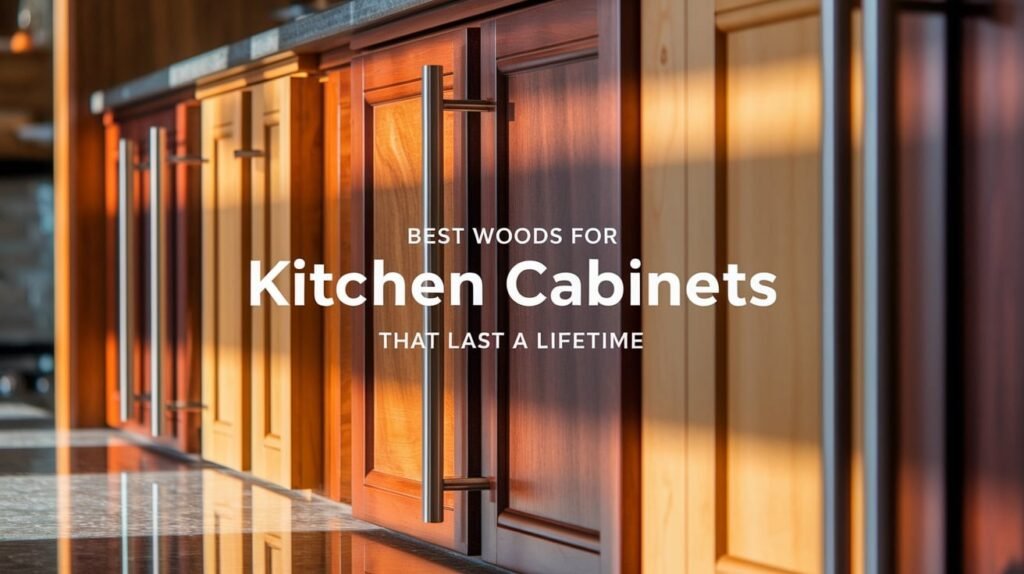When you’re spending thousands on kitchen cabinets, you want them to last. But with so many wood options out there, how do you know which ones hold up?
I get it. Cabinet shopping feels overwhelming. Salespeople throw around fancy wood names. Online reviews contradict each other. You’re left wondering if you’re making a smart investment or an expensive mistake.
Here’s the thing: some woods genuinely outperform others in kitchens. After years of testing and real-world feedback, certain species consistently prove their worth.
In this guide, I’ll walk you through the 7 most durable woods for kitchen cabinets. You’ll learn which woods resist moisture and scratches best, the real costs for each option, how each wood ages over time, and which species work for your style.
No sales pitches. No confusing jargon. Just honest information from someone who’s seen what works and what doesn’t. Let’s find you cabinets that’ll look great for decades.
7 Best Woods for Kitchen Cabinets
Not all woods are created equal. Some will serve your family for decades. Others? They’ll show wear in just a few years.
I’ve ranked these seven woods based on real-world performance. Durability comes first. Then we’ll look at cost and style.
1. Hickory
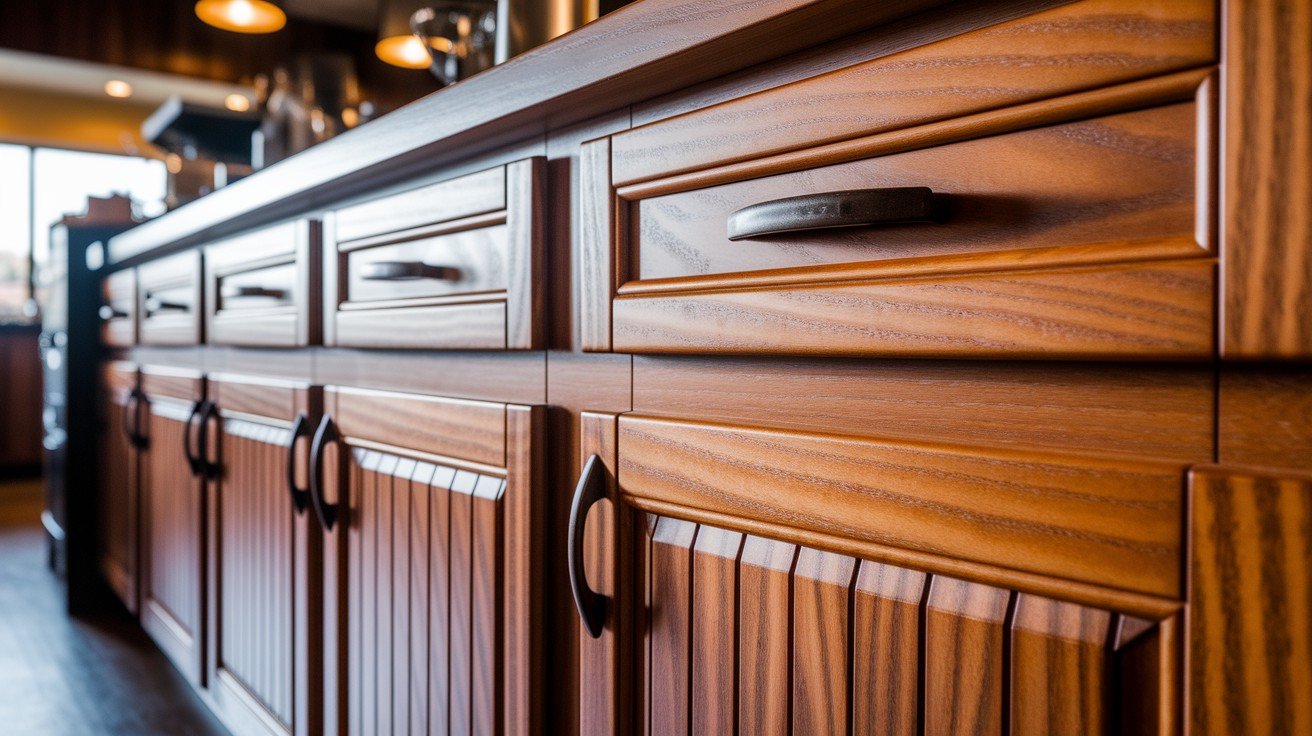
This is the toughest wood you can buy for cabinets. Hickory earns the highest hardness rating of any domestic wood. It resists scratches completely. Water barely affects it. Cracks? Rarely happens.
You’ll notice its reddish-brown color right away. The grain runs straight with a coarse texture that feels substantial. This wood means business.
Best for: Busy families with kids. Serious cooks who use their kitchen daily. Anyone who wants cabinets that outlast their mortgage. The downside? Hickory costs more upfront. But when your neighbors are replacing their second set of cabinets, yours will still look amazing.
2. Pecan
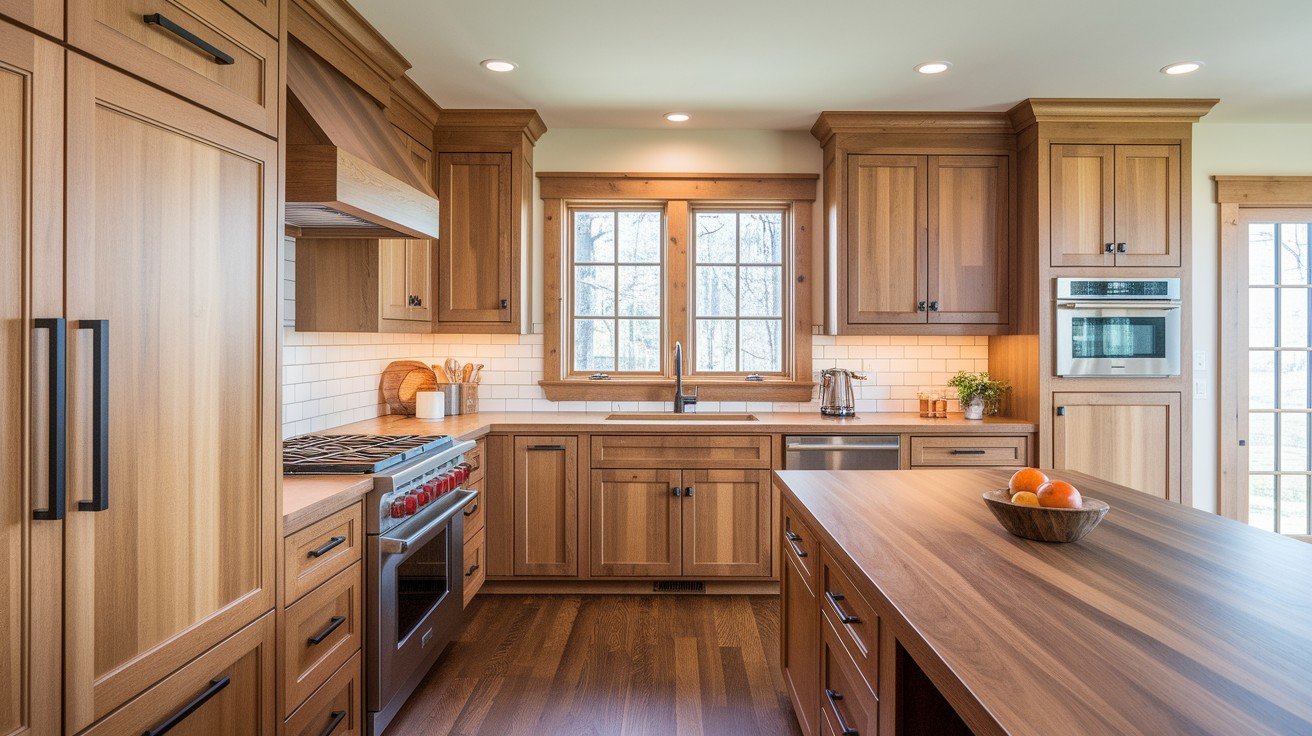
Think of pecan as hickory’s slightly softer cousin. Still incredibly tough, just a bit more affordable. This dense hardwood comes from the hickory tree family. That genetic connection shows in its performance. Pecan resists decay better than most woods. Scratches and dents bounce right off.
The golden color with reddish undertones warms up any kitchen. The linear grain keeps things clean and modern. Perfect for: Anyone wanting hickory-level durability without the premium price tag. I’ve seen 30-year-old pecan cabinets that still look fresh. That’s the kind of investment that makes sense.
3. White Oak
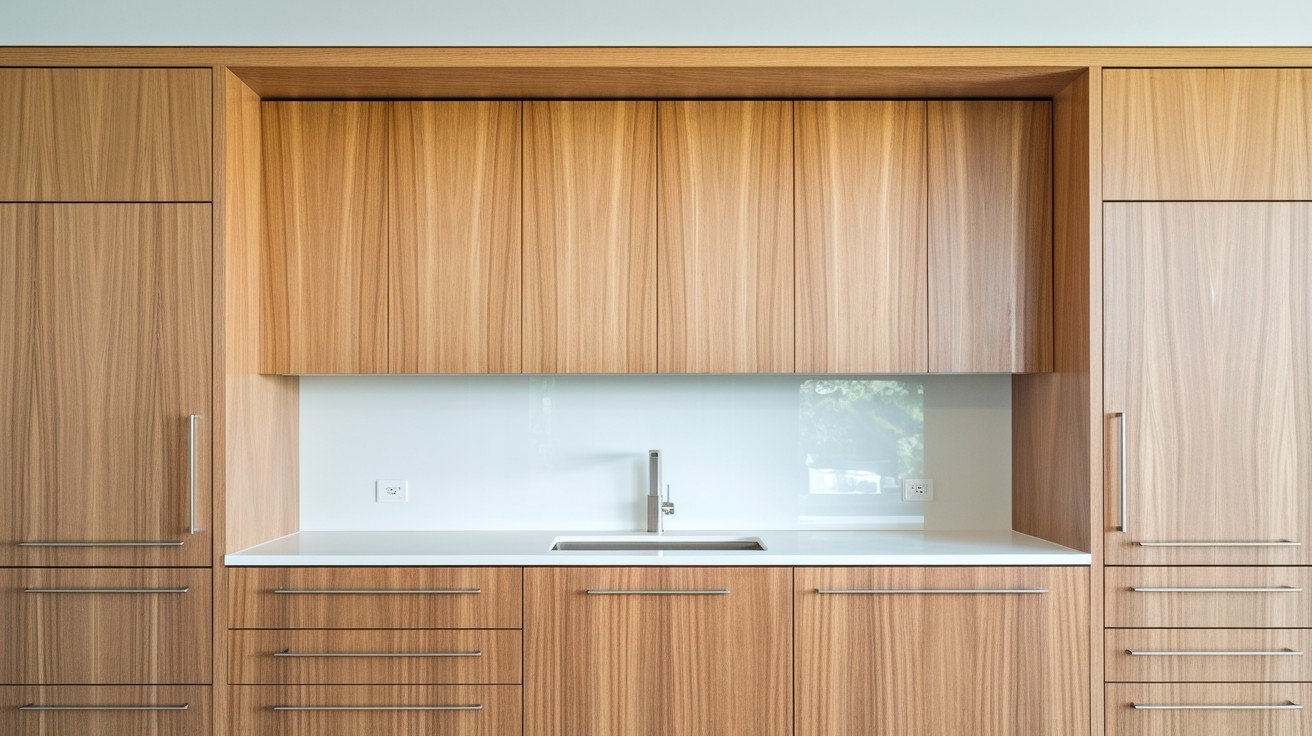
White oak is having a moment. And for good reason. This extremely dense hardwood handles everything kitchens throw at it. The light brown to tan coloring works with today’s design trends. Those straight grain patterns? They’re perfect for contemporary kitchens.
Here’s what sets white oak apart: moisture resistance. Steam from your dishwasher won’t faze it. Spills wipe up without leaving marks. Want something special? Ask for rift-cut white oak. The grain runs perfectly straight across every door. It looks expensive because it is.
Best for: Modern kitchens. Homeowners are following current design trends. Anyone prioritizing both style and substance.
4. Red Oak
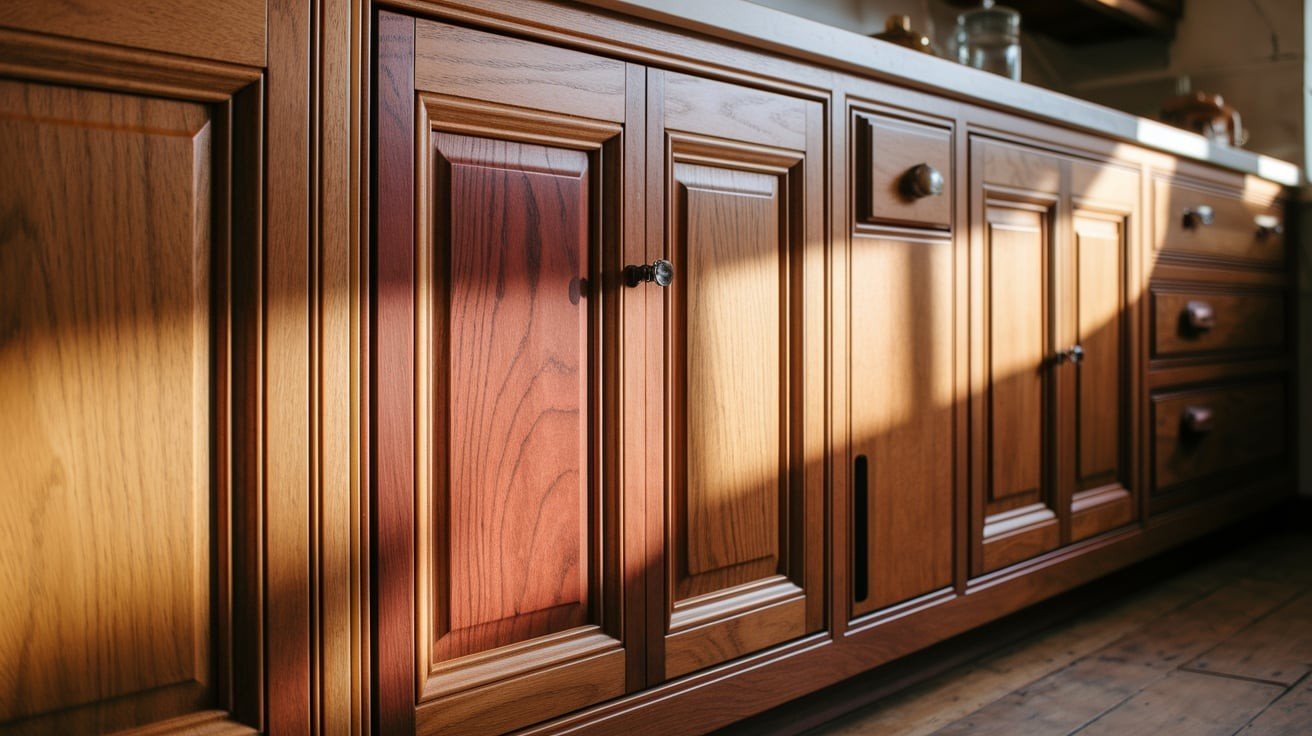
Red oak built America’s reputation for quality furniture. There’s a reason it’s been popular for over a century. This heavy hardwood shows off its prominent grain with confidence. The natural coloring ranges from light brown to rich red-brown. Every piece tells its own story.
But here’s the real advantage: red oak accepts stain beautifully. Want it darker? Lighter? No problem. This wood adapts to your vision. The damage resistance speaks for itself. I’ve refinished red oak cabinets from the 1970s that were still structurally perfect.
Perfect for: Traditional kitchens. Anyone who loves natural wood grain. Homeowners planning to stain their cabinets.
5. Maple
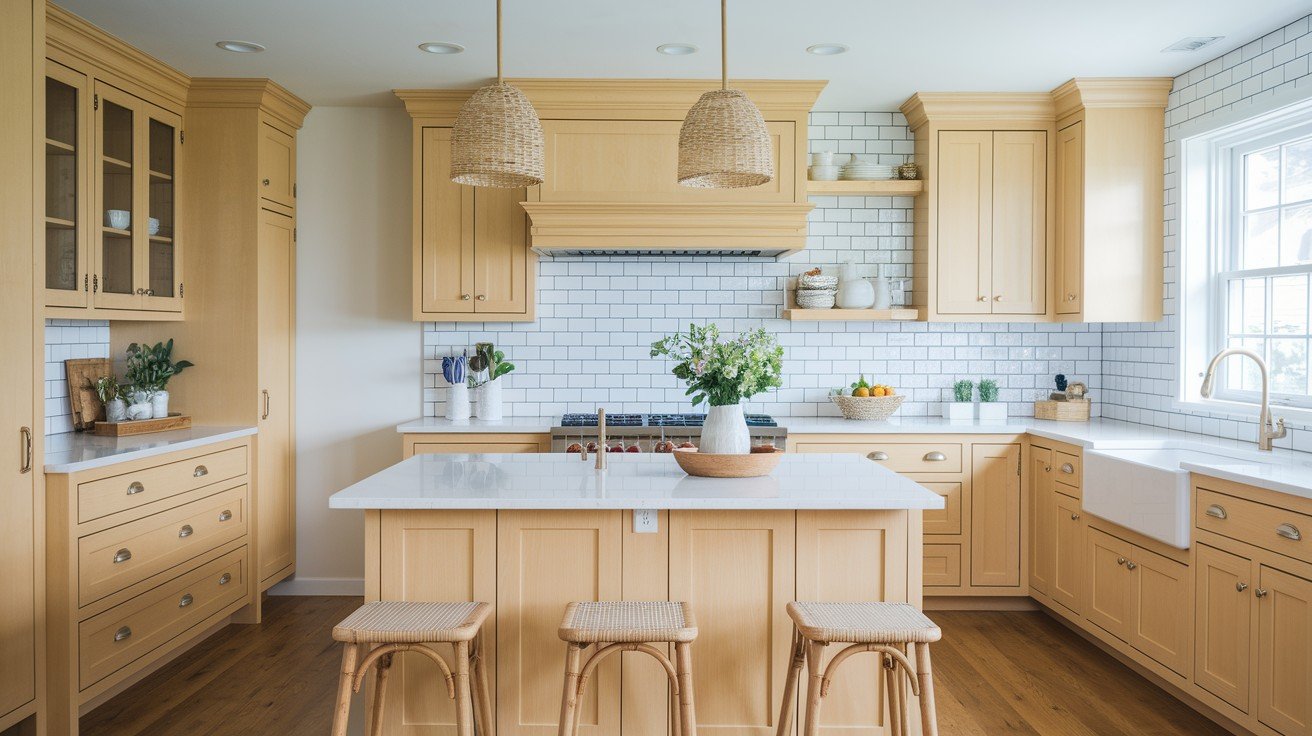
If you want maximum bang for your buck, maple works perfectly. This high-density hardwood carries serious weight without complaining. The light, creamy color gives you options. Paint it any color. Stain it to match your floors. Leave it natural for that clean look.
Maple’s moisture resistance rivals much more expensive woods. The smooth, consistent grain makes cleaning easy. No deep grooves to trap grease and grime. Here’s what I love about maple: it punches above its weight class. You get premium performance at a reasonable price.
Best for: First-time homeowners. Anyone wanting quality without breaking the bank. Kitchens that need painted cabinets.
6. Walnut
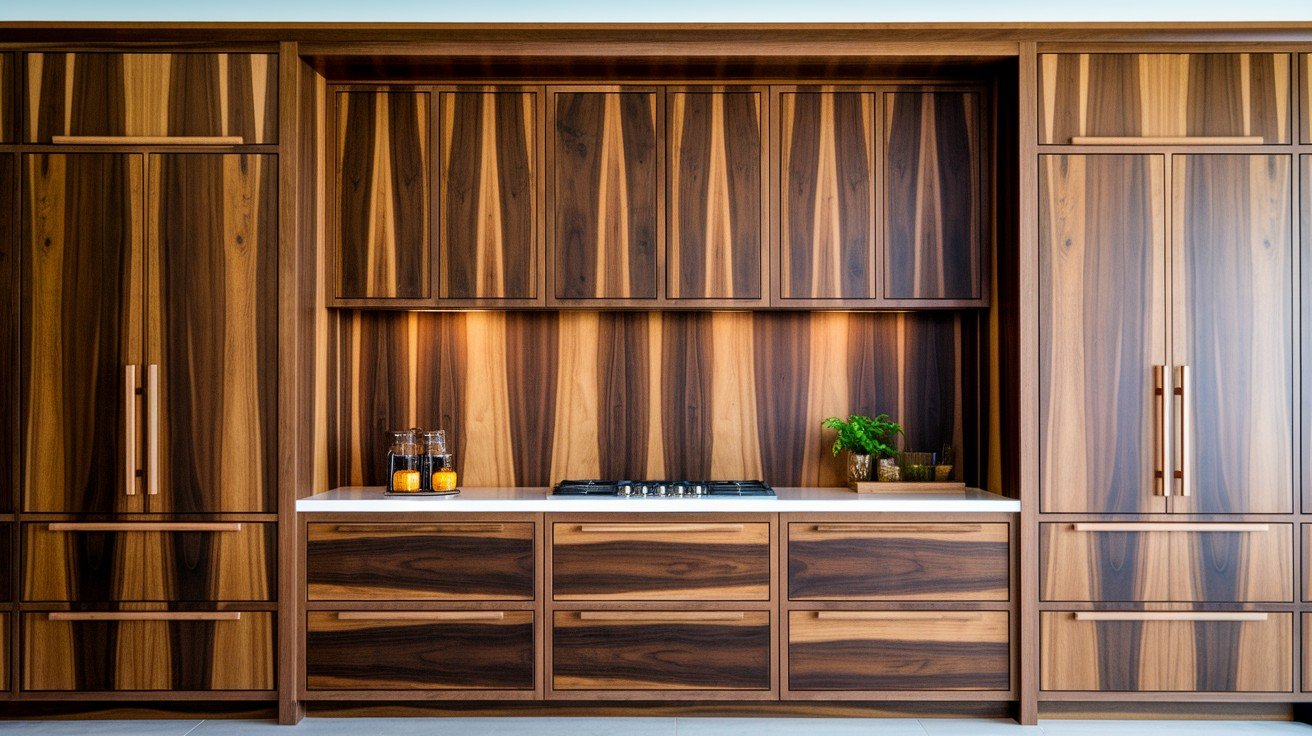
Walnut is the luxury car of cabinet woods. Those rich brown hues ranging from light to deep chocolate? They’re natural. No stain needed. The straight grain with varying thickness creates visual interest without being busy.
This dense hardwood comes with natural moisture barriers built right in. Scuffs and dents rarely penetrate the surface. It’s tough enough for daily use, beautiful enough for special occasions. The aging process improves the walnut’s appearance. Dark colors naturally lighten to create depth and character.
Perfect for: Homeowners investing in their forever kitchen. Anyone who appreciates natural beauty. Kitchens where cabinets are the main focal point. Yes, walnut costs more. But some things are worth the investment.
7. Cherry
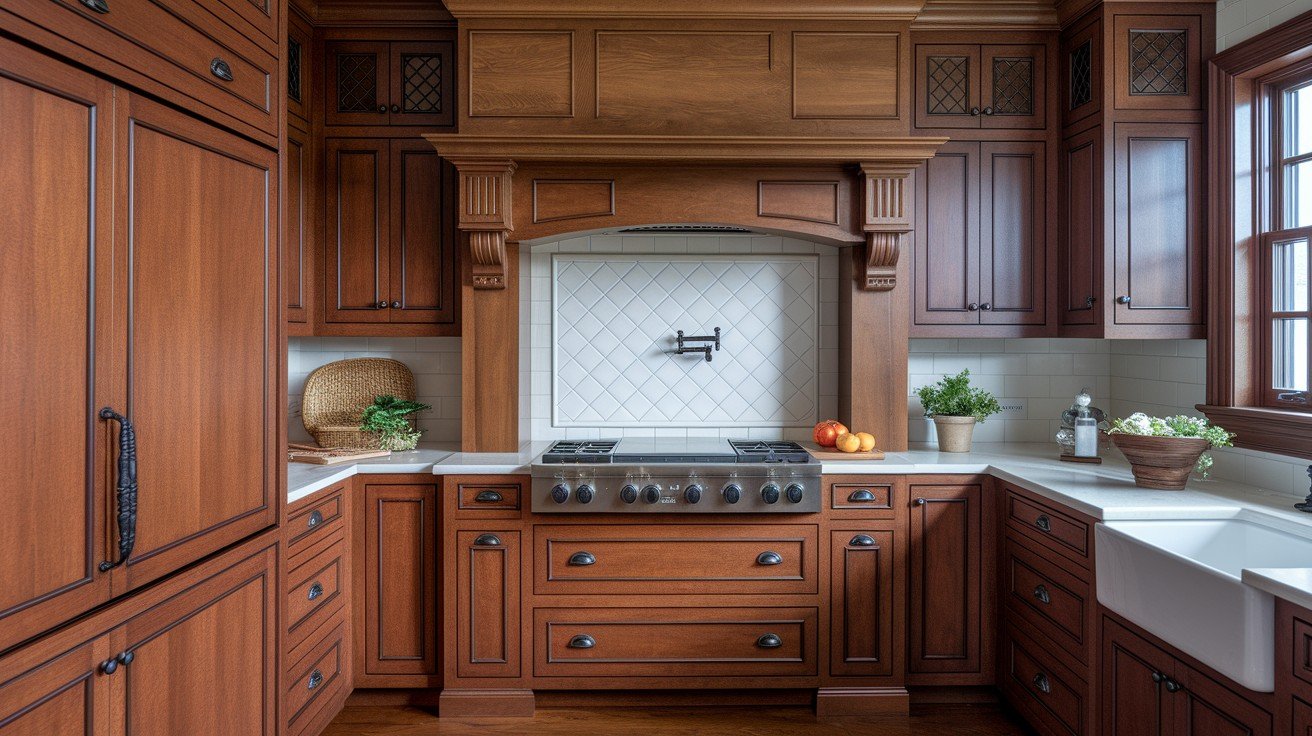
Don’t let “softer hardwood” fool you. Cherry still outperforms most cabinet materials by a wide margin. The magic happens over time. That initial reddish-brown color deepens and enriches as years pass. Your cabinets get more beautiful with age.
Minor scratches? They blend into cherry’s natural coloring. The smooth, closed-grain pattern feels luxurious under your hands. Cherry works especially well in traditional kitchens. But I’ve seen it look amazing in transitional designs too.
Best for: Homeowners who love wood that changes over time. Traditional kitchen styles. Anyone wanting proven performance with classic appeal.
Wood Performance Characteristics for Kitchens
Wood Performance Characteristics for Kitchens explains how different wood species handle daily kitchen challenges like moisture, heat, cleaning, and aging over time in real-world conditions.
Grain Patterns and Kitchen Functionality
Grain affects daily performance, not just looks. Tight grains like maple clean easily. Open grains like oak trap grease if not sealed properly. This matters during daily kitchen cleanup.
Straight grains resist splitting better than irregular patterns. Think of grain as the wood’s backbone. Prominent grain (oak, hickory) adds character. Subtle grain (maple, cherry) stays calm. Linear grain (white oak) feels modern.
Natural Color and Aging Properties
Woods age differently. Some darken, others lighten. Cherry shifts from pink to deep reddish-brown. Maple develops honey tones. White oak gains golden highlights.
Walnut’s deep browns soften over time. Hickory’s contrast mellows. South-facing kitchens age faster due to light exposure. Quality finishes slow this process by filtering UV rays.
Moisture and Heat Resistance Comparison
Kitchens challenge wood constantly. Steam, heat, and humidity test every cabinet daily. Natural water resistance varies by species.
Top performers: White oak (naturally water-resistant), walnut (dense structure), hickory (tight grain). Good performers: Maple handles normal moisture well. Red oak needs quality finishes for protection.
Cherry and pecan need extra sealing for best results. Bottom line: All these woods work in kitchens with proper finishing.
Cost Analysis and Value Comparison
Cost Analysis and Value Comparison breaks down real cabinet pricing by wood species and explains long-term investment value, maintenance costs, and resale benefits of quality hardwood choices.
Price Ranges by Wood Species
Real numbers matter. Budget options cost $100-250 per linear foot (red oak, maple). Mid-range runs $200-400 (cherry). Premium reaches $300-600+ (walnut, hickory, white oak).
Price drivers: Local woods cost less. Shipping adds expense. Limited supply increases prices. Complex machining requires skilled labor.
Long-Term Value Considerations
Smart buyers look beyond sticker prices. Quality hardwood often outlasts two budget sets. Maintenance varies – hickory rarely needs repairs, while cherry benefits from regular care.
Resale impact: Premium woods boost home values 5-10%. Standard woods maintain broad appeal. Refinishing advantage: Solid hardwood can be renewed multiple times. Engineered alternatives are usually one-time investments.
Simple math: Invest in quality once, or pay for mediocrity repeatedly.
Conclusion
The bottom line? Your kitchen cabinets are a major investment, and the wood you choose makes all the difference.
Hickory and pecan top our list for sheer toughness. White oak and red oak offer that perfect balance of strength and classic appeal. Maple gives you incredible value for your money. Walnut brings luxury that lasts. Cherry ages beautifully while staying strong.
Remember this: cheap cabinets cost more in the long run. Quality hardwood might seem expensive upfront, but it pays off when your cabinets still look amazing 20 years later.
Don’t let pushy salespeople rush you. Take time to feel different woods. Consider your lifestyle and budget. Choose based on facts, not fancy marketing.
Your kitchen deserves cabinets that’ll serve your family for decades. Pick the right wood, and you’ll never regret it.
Frequently Asked Questions
What is the most durable wood for kitchen cabinets?
Hickory ranks as the most durable domestic wood species, offering superior resistance to water damage, scratches, and cracks for decades.
Which cabinet wood offers the best value for money?
Maple provides excellent durability at a moderate cost ($150-250 per linear foot), combining strength, moisture resistance, and staining versatility effectively.
Do hardwood cabinets last longer than alternatives?
Yes, quality hardwoods like oak and maple typically last 30-50 years with proper care, significantly outperforming engineered alternatives.
Which wood species works best for painted cabinets?
Maple offers the smoothest surface for painting due to its fine, consistent grain and excellent paint adhesion properties.
How does wood choice affect kitchen resale value?
Premium hardwoods like cherry and walnut can increase home value by 5-10%, while quality woods like oak maintain strong appeal.

